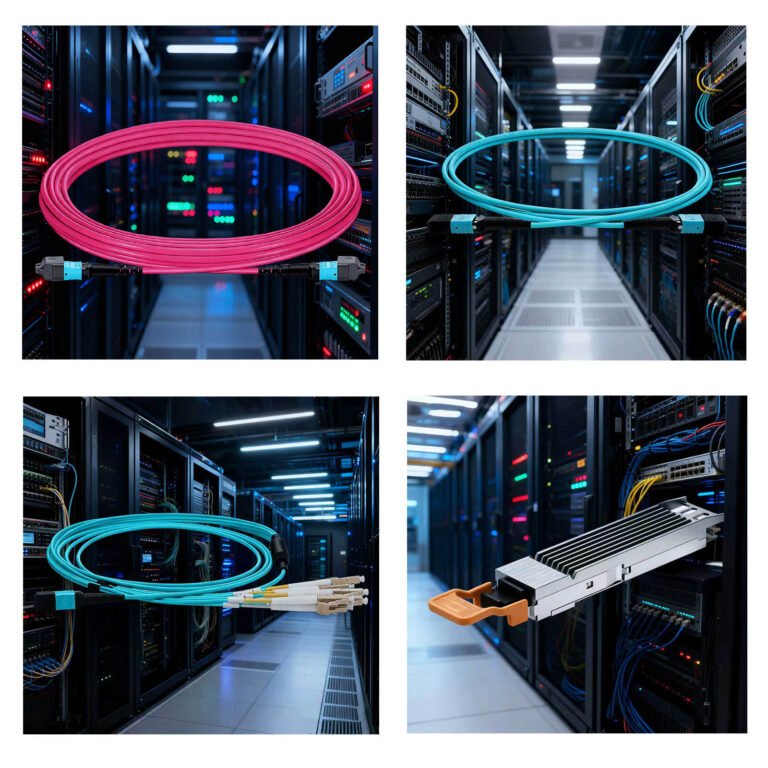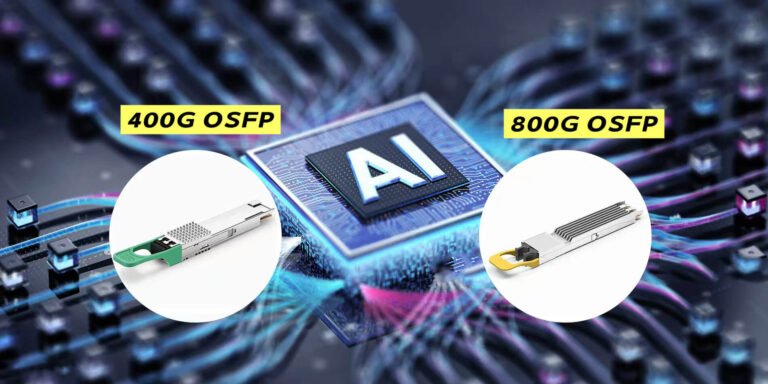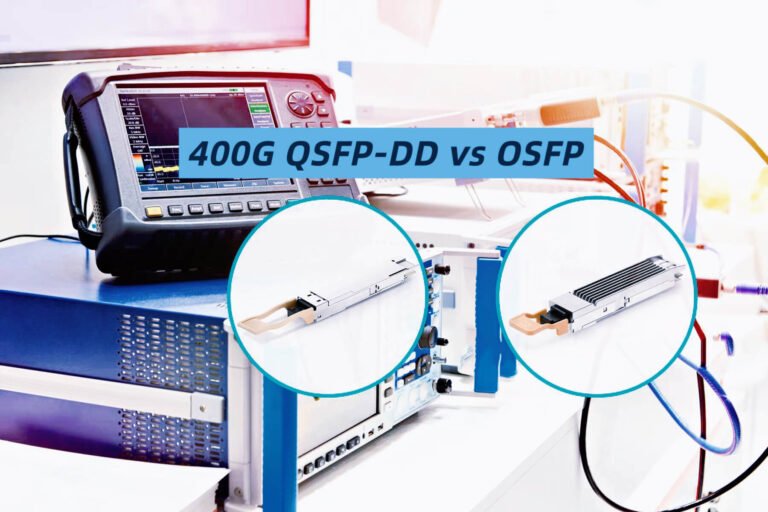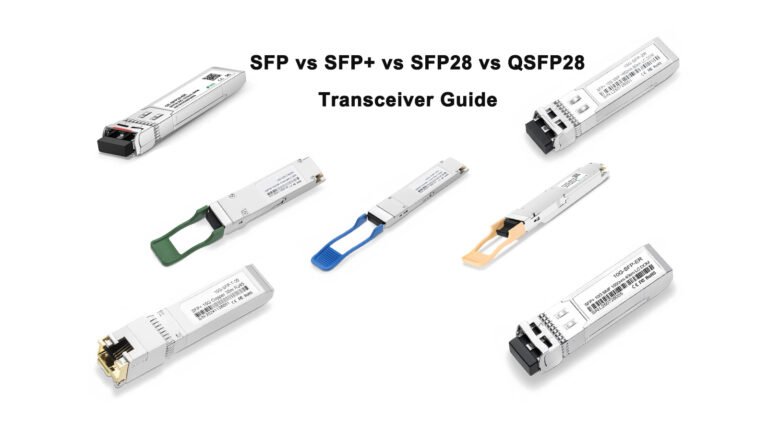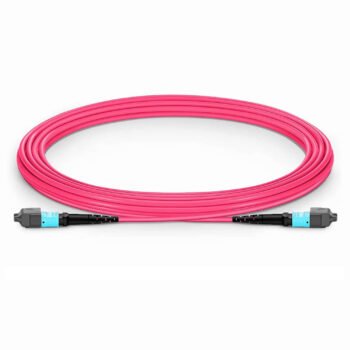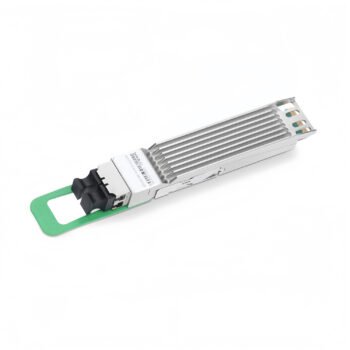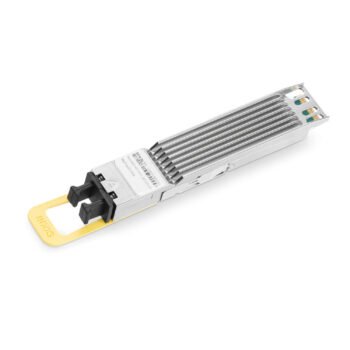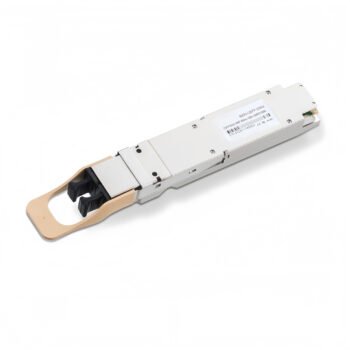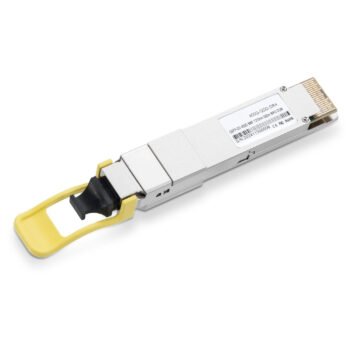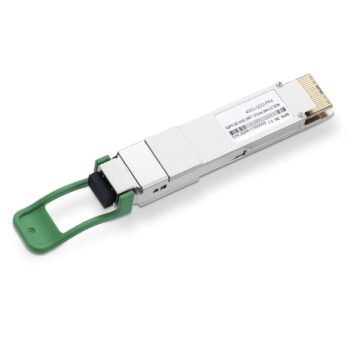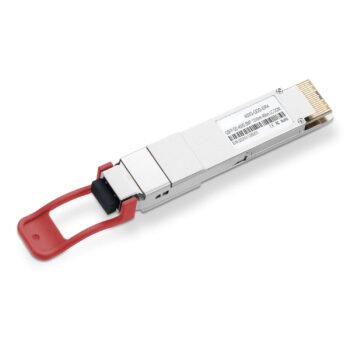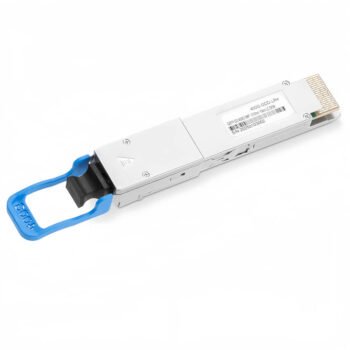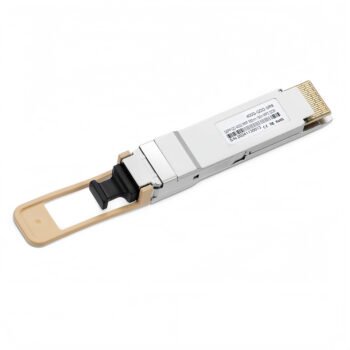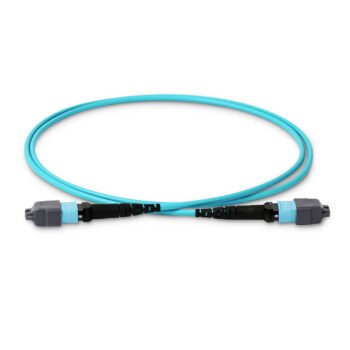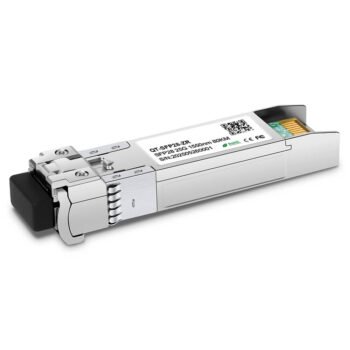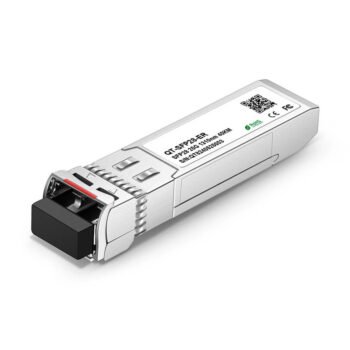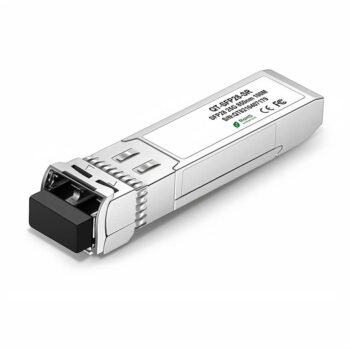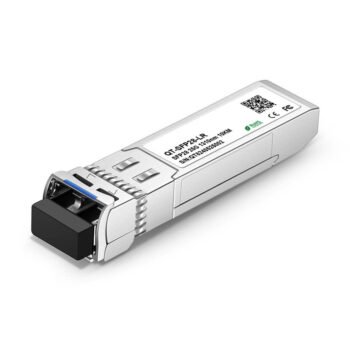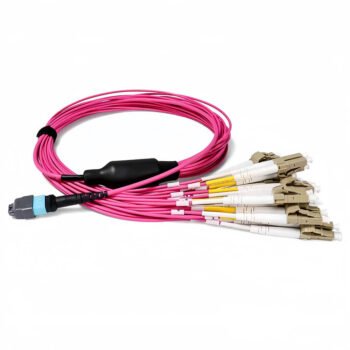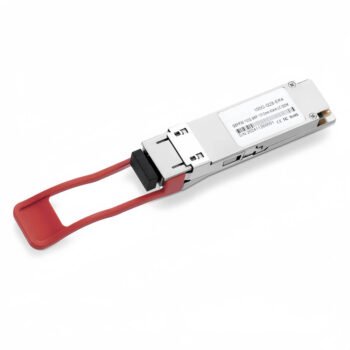SFP vs SFP+ vs SFP28 vs QSFP28: Which Transceiver Do You Really Need in 2025?
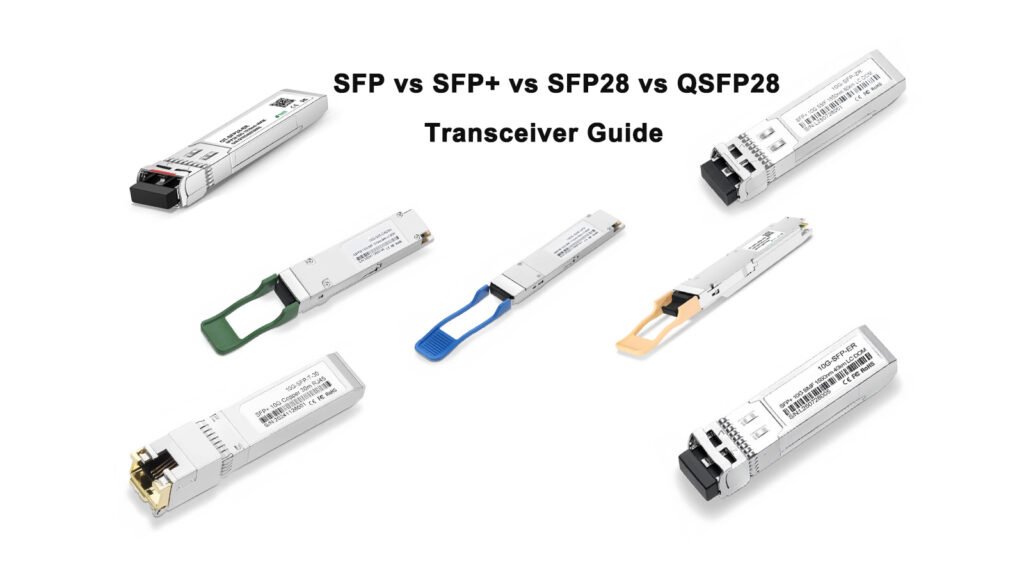
Modern networks scale fast, but optics choices can feel overwhelming. Costs rise, compatibility doubts creep in, and deadlines never move. This article gives you a plain-English, buyer-first guide to pick the right transceiver family for 1G/10G/25G/100G without vendor lock-in.
Snippet:
Choose SFP (1G) for legacy access and storage, SFP+ (10G) for ubiquitous TOR/server links, SFP28 (25G) for compact 25G spines or 100G breakouts, and QSFP28 (100G) for high-density cores/DCI. Match reach (SR/LR/ER/CWDM/PSM), fiber type, and port lanes, then verify coding/DOM and acceptance tests before purchase. 1
When I helped a trading firm move from 10G to a mixed 25G/100G fabric, the team was stuck between “just buy OEM” and “save with compatibles.” We used a distance-first decision tree, matched fiber plant limits, and ran a 10-minute acceptance checklist. The rollout shipped on time—and the optics bill dropped by 38% without a single link flap.
What changes from 1G to 100G: lanes, optics, and connectors?
Networks scale in lanes, optics, and connectors. Form factors look similar, but what runs inside is very different.
Snippet:
From SFP (1 lane) to QSFP28 (4 lanes), lane count and electrical signaling determine speed. Optical flavors (SR/LR/ER/CWDM/PSM) decide reach and fiber needs. Connectors shift from LC (duplex) to MTP®/MPO (parallel). Understanding these three levers prevents mis-orders and over-spend. 1
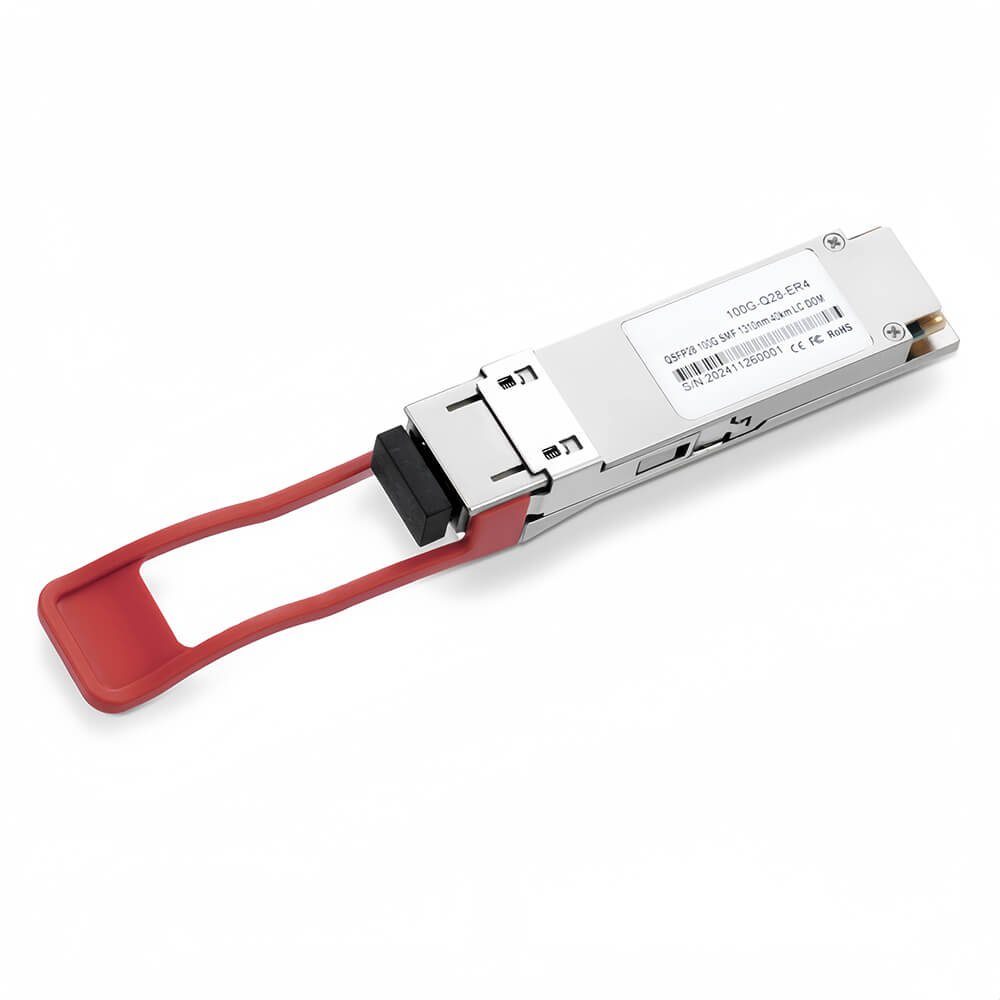
Form factor quick map
| Form Factor | Lanes (elec.) | Common Interfaces | Connector | Typical Use | Internal link |
|---|---|---|---|---|---|
| SFP (1G) | 1×1G | SX/LX/ZX/BiDi | LC | Legacy access, storage | SFP Modules |
| SFP+ (10G) | 1×10G | SR/LR/ER/ZR/DAC/AOC | LC/DAC | TOR ↔ server, SANs | 10G SFP+ Transceivers |
| SFP28 (25G) | 1×25G | SR/LR/ER/ACC/AOC | LC/DAC | 25G leaf/spine, 100G breakouts | 25G SFP28 Transceivers |
| QSFP28 (100G) | 4×25G | SR4/CWDM4/LR4/ER4/DR/FR/ACC/AOC | LC/MTP | 100G core, DCI, AI fabrics | 100G QSFP28 Transceivers |
Compatibility reality check—what works with what?
- SFP+ vs SFP: same size, different signaling. A SFP+ port can down-speed a 1G SFP; the reverse is not supported. 1
- SFP28 vs SFP+: same shell; many switches let SFP28 ports accept SFP+ at 10G. The opposite depends on platform firmware—test first. 2
- QSFP28 vs SFP28: use breakouts (100G↔4×25G) when platform supports it. 1
SR/LR/ER/BiDi/CWDM/DWDM—how to pick by distance and fiber type?
Reach, fiber count, and connector style decide your total cost—not just module price.
Snippet:
Use SR on OM4 inside the hall, LR for 10 km SMF, ER for 40 km, CWDM to push 2 km on a single LC pair, PSM when 8-fiber SMF trunks already exist, BiDi to halve fiber in access. Check loss budgets and panel counts before you buy. 3
The cheat sheet (distance / connector / power / use)
| Link Type | Typical Reach | Fiber / Connector | Power (typ.) | Good for |
|---|---|---|---|---|
| 1/10/25G SR | 70 m (OM3), 100 m (OM4) | MMF / LC | Low | TOR, short server links |
| 1/10/25G LR | 10 km | SMF / LC | Low-Mid | Campus/metro access |
| 10/25G ER | 40 km | SMF / LC | Mid-High | Metro/backbone |
| 100G SR4 | 70–100 m OM3/OM4 | MMF / MTP-12 | Mid | High-density rows |
| 100G PSM4 | 500 m | SMF / MTP-12 | Mid | When 8-fiber SMF exists |
| 100G CWDM4 | 2 km | SMF / LC | Mid | DCI across buildings |
| 100G LR4 | 10 km | SMF / LC | Mid-High | Metro aggregation |
| 100G ER4 | 40 km | SMF / LC | High | Long metro/backbone |
| BiDi (1/10/25G) | As spec | SMF / LC | Low-Mid | Halve fiber in access |
Distances above reflect widely used specs; always verify with vendor PMDs and your fiber plant loss. 34
Why CWDM4 vs PSM4 matters at 100G
At ≤2 km, CWDM4 uses one LC pair (two fibers) while PSM4 consumes eight. If fiber is scarce or patching is dense, CWDM4 usually wins on total cost, even if module price is similar. 5
When to choose AOC/DAC instead of optical SFPs
Optical isn’t the only way. Active Optical Cables (AOC) and Direct Attach Copper (DAC) often simplify short-reach links.
Snippet:
Pick DAC (passive/active copper) for ≤3–5 m low-latency links at the lowest cost; choose AOC for ≤3–30 m when you need thin, EMI-immune cabling and clean installation. Use pluggable optics when you require re-use, long reach, or mixed vendors. 6
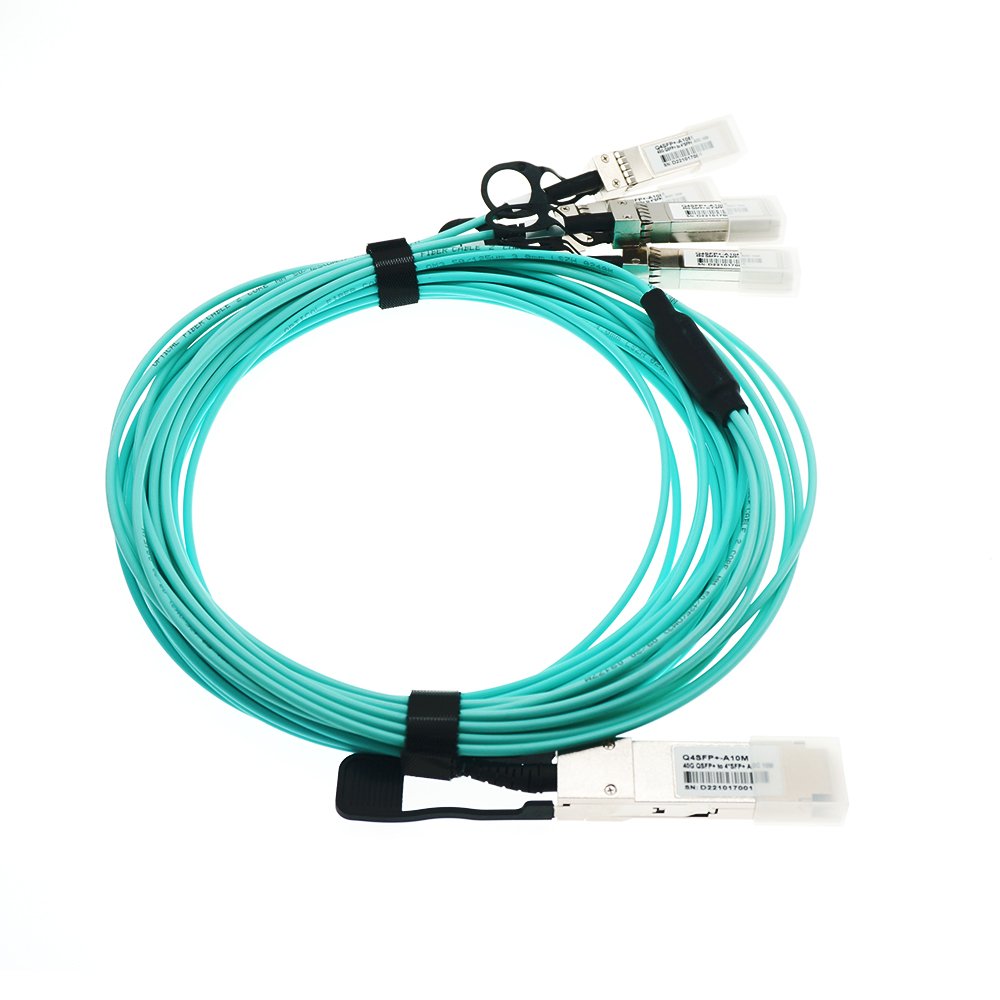
Quick comparison
| Option | Reach | Latency | Cable OD / Bend | Re-use | Typical Use |
|---|---|---|---|---|---|
| DAC (passive/active) | 0.5–7 m | Lowest | Thick / stiffer | Lower | TOR↔server, same-rack |
| AOC | 3–30 m | Very low | Thin / flexible | Medium | Cross-row short runs |
| Optical SFP/QSFP | 70 m–40 km | Low | Thin | High (module reuse) | Long rows, between rooms/campuses |
Pro tip: for dense AI clusters or HPC rows where cable routing is tight, AOC keeps airflow clear, but standardize lengths to simplify spares. For hybrid fabrics, pluggables give you the most flexibility over time. 6
Compatibility & coding: how to avoid vendor lock-in
Coding and management are the top causes of field surprises. Treat them as must-verify items.
Snippet:
Ask for CMIS/SFF compliance notes, live-code screenshots, and DOM accuracy proof. Run a quick loopback/BER/temperature test in your lab, and demand clear DOA/RMA terms. This replaces brand premiums with controlled, measured risk. 2
The 10-minute acceptance checklist (copy/paste)
- Visual: label, serial, connector, dust caps.
- Live-code: insert on target NOS (Cisco/Arista/Juniper/Huawei/H3C/SONiC); collect
show transceiver/show inventoryoutput. 2 - DOM/DDM: confirm Tx/Rx power, temp, Vcc are stable and within spec. 2
- Link: up/down time, syslog messages, error counters.
- BER: run a short traffic test; verify no errors at intended speed. 1
- Temperature sweep (optional, 5–10 minutes warm): confirm stability.
- Fiber plant sanity: count panels/splices; estimate IL vs power budget. 4
Why many teams shortlist ABPTEL
- Price advantage with stable brackets across SFP/SFP+/SFP28/QSFP28 families.
- After-sales advantage: fast DOA handling and advance replacement on qualified frames.
- Coding coverage for major NOS; per-lot test packs (eye/BER/temp/DOM).
- OEM/ODM: custom label, packaging, and EEPROM profiles.
- Stock + lead time: hot SKUs ready to ship; predictable replenishment.
A simple decision tree you can copy for your next rollout
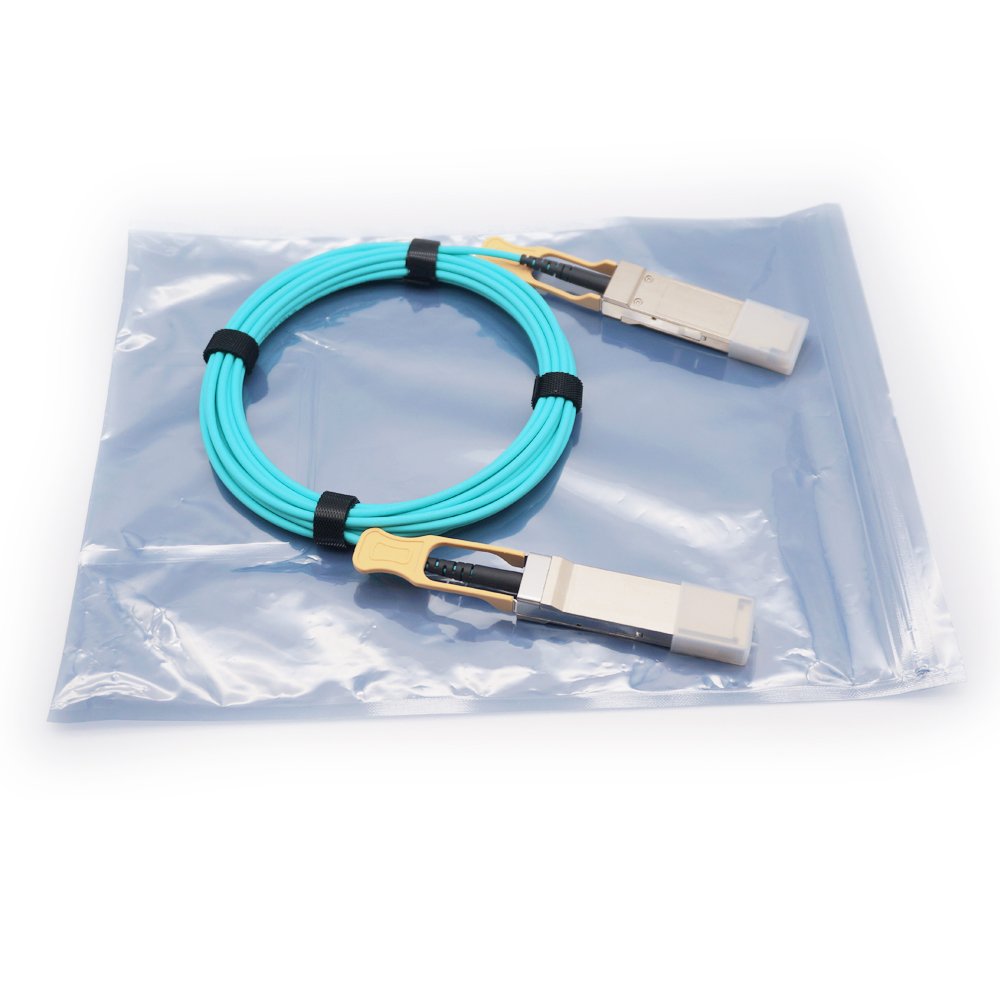
Step 1 — What speed does the port/fabric require?
- Need 1G → go SFP (SX/LX/BiDi by distance).
- Need 10G → go SFP+ (SR/LR/ER or DAC/AOC if ≤7–30 m).
- Need 25G → go SFP28 (SR/LR/ER or ACC/AOC for short).
- Need 100G → go QSFP28 (SR4/CWDM4/LR4/ER4/DR/FR).
Step 2 — What is the real optical distance and fiber type?
- ≤100 m, OM3/OM4 → SR/SR4.
- ≤500 m SMF → PSM4 (when 8-fiber SMF exists) or consider CWDM4 if fiber is limited.
- ≤2 km SMF → CWDM4.
- ≤10 km SMF → LR/LR4.
- ≤40 km SMF → ER/ER4.
- Short in-rack/row → DAC/AOC.
Step 3 — Connector and panel constraints
- LC duplex only → SR/LR/ER/CWDM/LR4/ER4.
- MTP®/MPO backbone in place → SR4/PSM4 (and MTP/MPO cassettes).
Step 4 — Platform features
- Need breakout 100G→4×25G? Confirm NOS and choose QSFP28 that supports it.
- Need DOM/CMIS? Confirm in the RFI and acceptance test. 2
Step 5 — Buy & test
- Request like-for-like quotes.
- Run the 10-minute acceptance checklist.
- Sign a frame with RMA/advance replacement clauses.
One-page “speed to product” table for action
| You need… | Go to… | Internal link |
|---|---|---|
| 1G access/storage | SFP SX/LX/BiDi | SFP Modules |
| 10G TOR/server | SFP+ SR/LR/ER/DAC/AOC | 10G SFP+ Transceivers |
| 25G leaf/spine | SFP28 SR/LR/ER/ACC/AOC | 25G SFP28 Transceivers |
| 100G core/DCI | QSFP28 SR4/CWDM4/LR4/ER4 | 100G QSFP28 Transceivers |
Why working with ABPTEL lowers project risk and cost
As a manufacturer-supplier, ABPTEL combines pricing power with engineering support:
- Transparent test data (eye/BER/temp/DOM) per lot.
- Global coding libraries and live-code screenshots on request.
- OEM/ODM flexibility—labels, packing, EEPROM fields that match your fleet.
- Fast after-sales: DOA handling and advance swap for qualified accounts.
- Logistics you can plan for: stock on mainstream SR/LR/CWDM4/LR4, predictable lead times on ER/industrial variants.
If you want to benchmark, request a mixed sample kit across SFP/SFP+/SFP28/QSFP28. We will match coding to your NOS versions and include quick-start acceptance steps so your lab time is minimal.
Call to action
- Browse: SFP →SFP Modules
- Browse: 10G SFP+ → 10G SFP+ Transceivers
- Browse: 25G SFP28 → 25G SFP28 Transceivers
- Browse: 100G QSFP28 → 100G QSFP28 Transceivers
Need a same-day shortlist or a sample kit? Email Candy – Candy@abptel.com (Shenzhen, China). We support B2B OEM/ODM and ship globally.
-
IEEE 802.3 PMDs and 100G architecture overview: https://www.ieee802.org/3/ ↩ ↩ ↩ ↩ ↩
-
SFF/CMIS management & coding basics for pluggable optics: https://www.snia.org/forums/sff/ ↩ ↩ ↩ ↩ ↩
-
Structured cabling distances (OM3/OM4/OS2) and link budgets: https://www.cablinginstall.com/cabling-design/article/14279132/structured-cabling-benefits ↩ ↩
-
Corning optical application notes—loss budgets and fiber types: https://www.corning.com/optical-communications/worldwide/en/home/knowledge-center/technical-papers.html ↩ ↩
-
CWDM4 versus PSM4 (MSA notes and cost/fiber tradeoffs): https://www.cwdm4-msa.org/ ↩
-
Ethernet Alliance guidance on AOC/DAC usage and interoperability: https://ethernetalliance.org/ ↩ ↩

